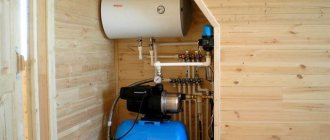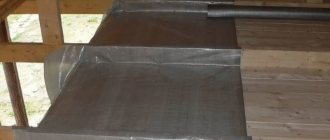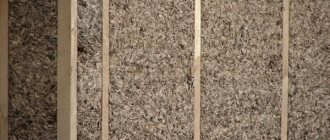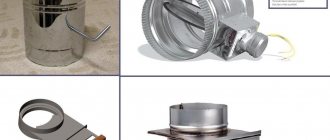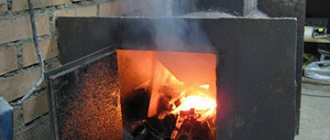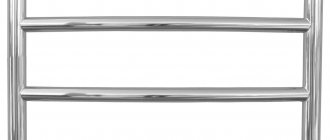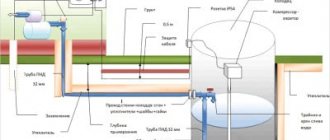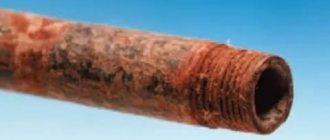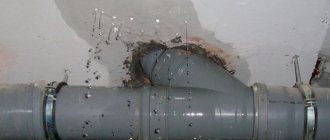Why do you need a clay castle?
The difference between concrete well structures is that, unlike wooden ones, reinforced concrete ones are harder to seal. And in order for the water to remain clean for years, you need to build a castle for the well made of clay. Wooden structures are mounted airtight, and the wood, after swelling, additionally seals the gaps. With concrete things are different.
There are special reinforced concrete rings on sale, the design of which has special cavities for filling with water-resistant materials. Seams and joints are coated with mastic.
But clay remains the most popular material because it:
- retains ground and flood waters;
- durable and does not require annual maintenance;
- It is inexpensive and accessible to everyone.
Clay castles around the well are effective protection of structures from melt water in the spring, and rain water during the warm season.
Where are clay castles used?
The technology is applicable to solve a lot of problems, the main ones being:
- Sealing the walls of wells from the ingress of groundwater containing contaminants that enter the upper layers of the soil. These can be mineral fertilizers, products of the breakdown of biological compounds and other harmful impurities.
- Construction of an artificial reservoir. A different problem is solved here. Water from the reservoir does not go into the ground. If it is expected that people will walk along the bottom, then the construction of a clay castle is necessary to make walking on it pleasant.
- When backfilling the foundation. This is necessary so that flood waters do not seep through the soil into the basement and do not insulate the zero cycle of the structure. The technology involves mechanical compaction.
In order for the blind area around the source to last for decades, the work must be completed two years after the installation of the rings. But during this period, you can use soft blind area technology. It involves covering the top layer with an elastic material that serves during the natural compaction period.
Clay castle: what is it, how to make it and why
One of the final stages of creating a well is backfilling and compacting the soil around the top of the shaft. Often customers demand, and well builders, accordingly, offer the construction of a clay castle.
Clay castle around the well trunk. Photo from the site kolodecgrad.ru
However, this element does not always function correctly and is generally necessary. Often, on the contrary, a clay castle causes harm.
What is a clay castle
A clay castle is a waterproofing structure made of clay of a certain quality around foundations, wells, cellars, pools, installed where it is necessary to limit the flow of water. The characteristics of such structures were regulated by Building Codes and Regulations (for example, SNiP II-53-73 “Dams made of soil materials” is no longer valid).
Clay serves as a waterproofing agent because it consists of small particles (less than 0.002 mm in size) that are shaped like flakes, like fish scales or lentils. The pores between the clay particles are also small, their size is about 0.005 mm.
Clay
When moistened, clay particles swell and block access to water; more precisely, water passes through the clay, but very slowly. And if it has another path, then the water will choose it instead of the extremely leisurely seepage through the clay.
How does a proper clay castle work?
The structural features of clay (small flat particles-flakes) determine the functioning of a clay castle. SanPiN 2.1.4.1175-02 “Hygienic requirements for the quality of water from non-centralized water supply. Sanitary Protection of Sources” (replacing SanPiN 2.1.4.544-96) recommends its installation during the construction of wells. In particular, paragraph 3.3.4 of this document states: “A castle should be made along the perimeter of the well head from well-pressed and thoroughly compacted clay or rich loam 2 meters deep and 1 meter wide.”
Construction of a well and a clay castle. Photo from the site kolodec.ru
If you are planning to build a clay castle, pay attention to these recommendations - depth and width. And the most important thing is that you need to use clay or fatty loam, that is, rocks containing more than half of the clay particles or at least 40% (fatty loam). And not just loam or even sandy loam, where there are no more than 10% clay particles.
The clay for the castle must be well kneaded - only then will it become waterproof. Photo from the site iz-kirpicha.su
It is also important that the clay is well kneaded and then thoroughly compacted. When the clay is crushed, its flat particles occupy a position parallel to each other: the “lentils” are tightly nested into one another. At the same time, the pores of the soil decrease, and the clay stops allowing water to pass through - it becomes a clay castle.
Why does a well need a clay castle and is it needed at all?
Why does a well need a clay castle? In order to prevent water from flowing down the outer wall, seeping through the seams, and, ultimately, moisture that has not been treated enters the well.
As stated above, clay waterproofing will only work if the clay is properly prepared and installed. Therefore, simply some kind of clay mixture, poured and even compacted when laying with feet or hand tools, will not provide a waterproofing effect. But it will be perfectly susceptible to frost heaving - an increase in the volume of soil when water freezes in its pores. This is especially true for clay soils.
How harmful is the “wrong” clay castle. Photo from the site kolodec.ru
In winter, the clay around the rings expands. And since it cannot expand in the horizontal direction, it does so vertically - along the shaft of the mine, while tearing off the upper rings. Cavities form under the clay layer: the soil around the rings continues to shrink for several years, and the castle has a different density and structure. Water and all kinds of debris, including the corpses of dead small animals, get into the resulting cavities.
An improperly constructed clay lock does not prevent untreated surface water from entering the well, but further aggravates this process. Therefore, if you are not sure that the waterproofing layer of clay will be laid correctly, it is better not to create unnecessary problems for yourself.
Features of waterproofing with a soft blind area
The use of temporary waterproofing in a soft blind area around a well has a number of technological aspects that must be taken into account during the installation process:
- The entire structure is laid at the level of the second ring.
- The materials used are waterproofing film and sand.
- The edges of the film strips are thrown over the well rings.
- Decorative material is laid on top of the film and sand.
In this case, all technological requirements must be met.
Laying technology
Before making a clay castle, you need to dig up the soil to the level of the 2nd ring. The selected soil is no longer used and must be removed and disposed of. A film is placed on the bottom. The size of the area to be closed is at least a meter from the outer wall of the reinforced concrete ring.
One end of the film is placed over the well above the seam. It needs to be secured, for which a metal belt, tape or self-tapping screws are used, which are screwed directly into the concrete. In the case where adhesive tape is used, several turns must be wound. After this, the cavity is filled with sand on top of the film.
Backfilling is not carried out to the very top if FEM or natural rubble stone is used as a decorative coating. When laying, check that there is a slope away from the well of at least 1.0-1.5 degrees. But this is a temporary method, and to ensure the tightness of the well, a clay castle is a necessity. But not every type of clay can be used as a material.
How to choose clay for a castle
To construct the castle, fatty varieties of red clay are used. The deposit doesn't matter. Another thing is the content of impurities. Clay is used that contains no more than 15% sand. Absolute purity is not required, but an excess of solid particles that cannot serve as a binder in an aqueous solution is a factor sufficient to reject the material.
The clay must be free of stones, debris and other contaminants.
If there is no fatty clay, and there is no place to bring it from, then you can use another type. During preparation, it is soaked and aged. Usually they work like in the old days: they are soaked in the fall and laid in the winter. At the same time, make sure that the clay does not dry out. So it becomes plastic, and all the particles combine into a single mass.
Periodic freezing and thawing is allowed during the soaking process. This is even good, since moisture permeates the entire volume. The main thing is to make sure that the mixture does not dry out or crack. And to improve plasticity, lime is added to the composition in a ratio of 1:5. For one share of lime put 5 shares of clay.
How to lay a soft blind area around a well + video
Some “experts” argue that this type of protection against water pollution is an atavism and a relic of the past. In fact, such statements are justified by two tricks:
- Few people say that you need to wait two years and then start improving the well. This is in order to put the source into operation as early as possible.
- It is beneficial for them that the client contacts them every year. After all, as a rule, the same people are engaged in cleaning wells from dirt, and it is beneficial for them that garbage appears in the water as early as possible.
The technology involves laying a film that covers the soil a meter around the walls of the well. The overlap that is placed over the seam between the first and second ring should cover it. The cavity obtained after excavation of the soil is filled with clay. It cannot simply be filled in and compacted mechanically. It is better to see the installation technology.
Disadvantages of a clay castle
The poor quality of the work performed is due to the fact that people who decided to lay the clay castle themselves do not adhere to the technology.
If the clay is not matured enough, is not mixed correctly, is dry or uneven, it is impossible to achieve the desired plasticity. People do the backfill as is and simply compact it with a mechanical tamper.
As a result, the perched water, which lies in the upper layers of the soil, freezes in winter. The resulting ice, when expanding, puts excess pressure on the rings and seam and leads to a violation of the integrity of the structure. Another drawback is the two-year wait for natural soil settlement. But this problem can be solved with a temporary castle made of compacted sand.
The correct technology for compacting earth
This procedure must be carried out in several approaches, as soon as you have laid two hundred millimeters. If a poor-quality seal is made, then the whole process must be done all over again. The clay used for the clay castle should have a moisture content of 20-30 percent.
For effective tamping, use a sole with a small area, but with a large mass.
When to install a clay castle for a well? Once you have made the well, do not install a clay castle; the prepared soil must settle.
Otherwise, cracks and crevices will appear in the ground, and the clay castle in this case will be useless. This work can be done with your own hands or with someone else. It is best to entrust the work to specialists.
Conclusion + useful video
Summarizing all of the above, we determine that all the work associated with the installation of a clay castle can be done independently. Teams that claim that this is not necessary cannot be considered professional, or are being cunning in front of the customer. The described procedure is one of the mandatory measures for the improvement of natural drinking water sources.
The only thing that needs to be taken into account is that the clay castle is installed two years after the well is put into operation.
This means that in some cases decoration will have to be postponed. And within a two-year period, sand will be installed instead of clay. Otherwise, there are no difficulties, and the water in the well will remain clean and clear for years.
Where to use a clay castle for a well (video)
When the well is ready, they begin to think about where to put the clay. For this purpose, a blind area will be installed. The construction of a clay castle is quite simple, but it is important to follow all the rules and sanitary standards, because not every soil can be used to make a blind area.
- Author: admin
Rate this article:
- 5
- 4
- 3
- 2
- 1
(0 votes, average: 0 out of 5)
Share with your friends!

